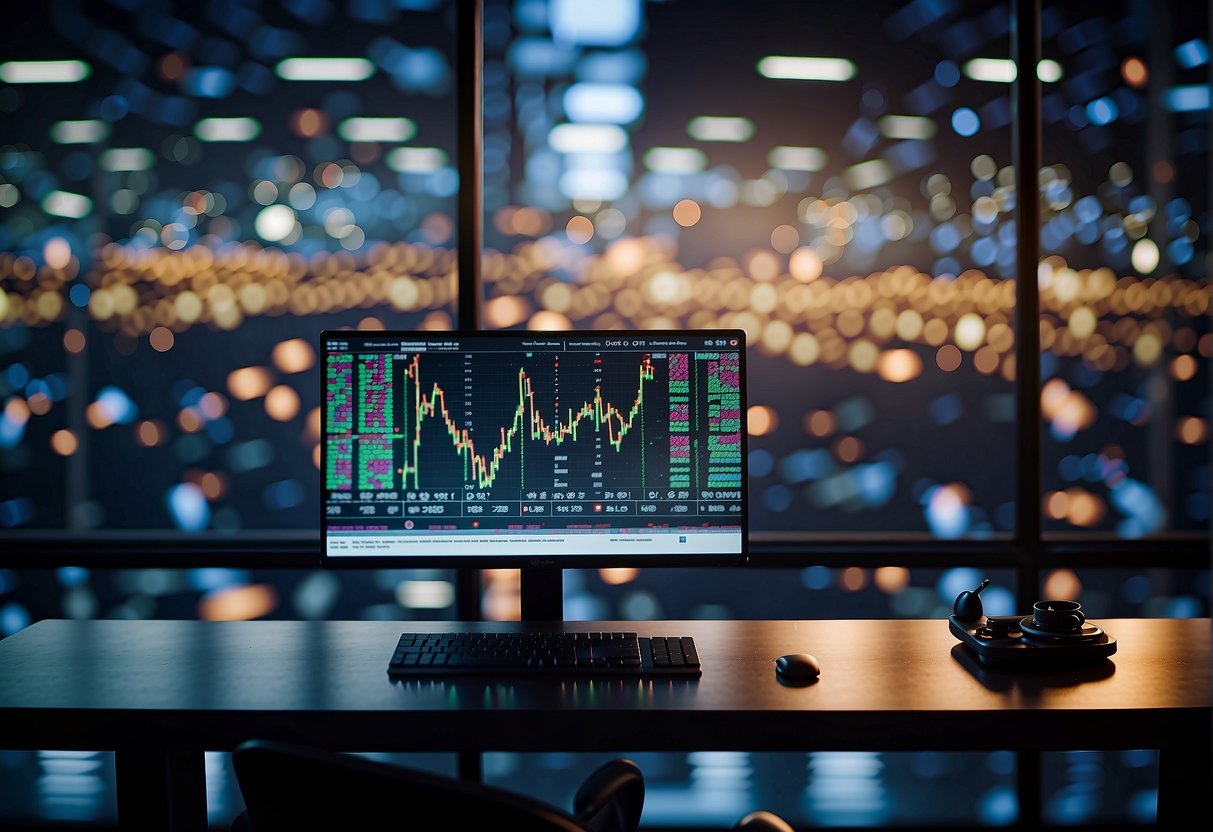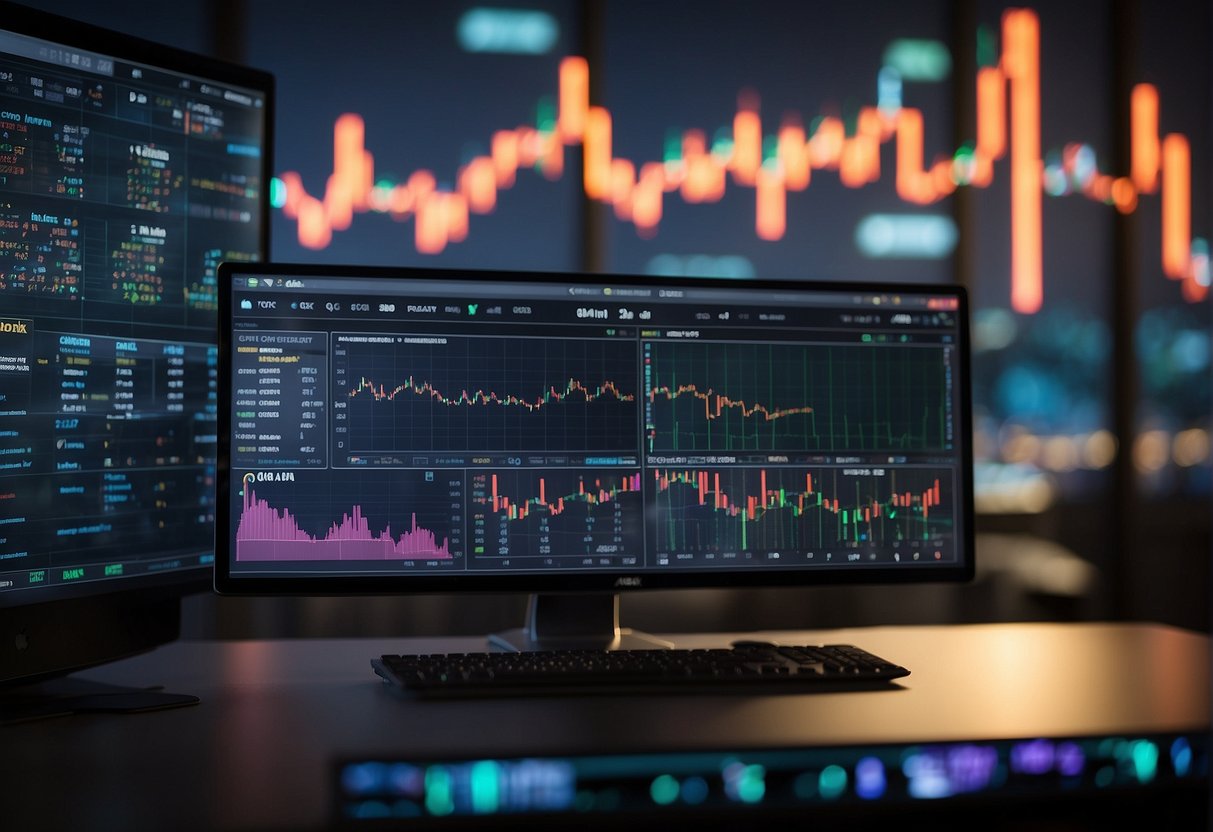
Market
By Mahesh Kashyap
An AI Stock Trading Assistant is like having a super-smart buddy that's really good at math and patterns by your side while you're trading stocks. It uses artificial intelligence to sift through tons of financial data way faster than any human could. It helps you figure out when to buy or sell by picking up on market trends and adapting its advice as things change on the fly. Plus, it learns from its successes and mistakes over time to get even better at helping you make money. Pretty cool, right?
AI stock trading assistants are designed to assist investors in navigating the complex world of financial markets through the application of artificial intelligence and machine learning. These tools are fundamentally reshaping how we approach market analysis by studying extensive amounts of market data to uncover patterns, trends, and potentially lucrative trading opportunities. Let's break down their main principles:
When weighing AI trading assistants against conventional trading approaches, several distinctions become evident. AI-driven tools employ algorithms and continuous learning processes to sift through and analyze vast data sets rapidly, providing insights that might otherwise go unnoticed. They're not just efficient; they're designed to evolve with the market, fine-tuning their analysis to keep your trading tactics on the cutting edge.
Traditional trading methods, on the other hand, often hinge on painstaking manual data analysis. This approach not only eats up valuable time but can also be prone to the whims and biases inherent to human judgment. As market conditions shift—a daily inevitability in the trading world—these traditional strategies demand constant, meticulous reassessment to stay relevant.
Moreover, the effectiveness of traditional trading is frequently linked to the trader's own expertise and gut feelings—a stark contrast to the objective, data-driven insights provided by AI. Rather than relying on intuition, AI trading assistants grow smarter and more precise in their forecasts with each analysis they perform.
The bottom line is that by integrating AI trading assistants into your strategy, you position yourself to make more informed, agile, and data-backed investment decisions, potentially leading to improved outcomes in your trading endeavors.
| AI Trading Assistants | Traditional Methods |
|---|---|
| Use algorithms to process large volumes of data | Rely on manual analysis of market data |
| Continuously adapt to market changes | Requires regular updates to trading strategies |
| Improves predictive accuracy over time | Often dependent on experience and intuition |

A standout feature of AI trading software is its capability to digest and analyze information as it happens. This constant flow of data processing ensures you have the latest updates on market conditions and stock price fluctuations. With real-time data at your fingertips, every decision you make is informed by the most current market insights.
For example, platforms like OVTLYR utilize AI to scan all US stocks constantly, pinpointing high-probability trading setups as they develop. This immediate identification of potential can guide you toward more lucrative trades and better use of your investment capital.
The foresight provided by AI trading tools is another major draw. Through the employment of intricate algorithms that excel in technical analysis and recognize patterns, these assistants are not just reactive—they're predictive. They crunch numbers, spot chart patterns, and dissect the multitude of market signals to furnish you with educated guesses on what the market might do next. These capabilities enable traders to quickly see and understand market trends, making strategy refinement easier and more informed.
AI trading platforms often come with a dual promise: to be as customizable as they are easy to use. This democratization of trading technology allows traders at every skill level to craft and implement their strategies without needing a background in coding or deep technical know-how.

The use of AI in stock trading is streamlining the way investors approach the markets, offering tools to help you boost your gains while keeping risks in check. Let's dive into two fundamental strategies that harness AI to improve stock trading outcomes: the process of backtesting to shape your trading strategies, and the dual focus on risk management alongside precise trade execution.
Refining your trading strategies hinges on the practice of backtesting. AI simplifies this process by enabling you to assess your strategies against historical market data. This examination aids in spotting recurring market patterns and finessing the timing of when you enter and exit trades.
Here's how you can straightforwardly apply AI to backtesting:
Incorporating AI-backed backtesting moves you closer to pinpointing strategies that could lead to more consistent and successful trades.
Mastering risk control and nailing the timing and precision of your trades are key pieces of the trading puzzle. AI steps in to bolster both aspects in the following ways:
Embracing AI for your stock trading approach means you're equipped to handle risk with greater finesse and carry out trades with higher precision, setting the stage for a stronger performance in the markets.


Picture AI stock trading assistant as your dedicated trading assistant, finely tuned to understand exactly what you need. This assistant works around the clock to save you precious time by quickly analyzing heaps of stock market data—far faster than any human could. Also, it's like having a financial guardian angel that helps you save money by reducing costly mistakes, thanks to its precision and attention to detail.
Just like you get better at a game with practice, AI learns from each trade, constantly improving to make smarter, more informed decisions that could grow your savings. It doesn't get swept up in emotions, either; it's always cool and collected, making level-headed trades without the fear or excitement that might trip up us humans.
Plus, AI can be personalized just for you, fitting your unique trading preferences like a glove. This means it's not just a one-size-fits-all tool; it's more like a custom-made gadget designed to help you save time and money as you navigate the stock market.
When it comes to finding the ideal AI trading assistant, think of it as choosing a new smartphone: you want something that fits your lifestyle, isn't too complicated to use, and won't break the bank.
First off, have a look at what's out there. Different brokers have different offerings, and there's a bunch to choose from. You might have heard of some like Trade Ideas, TrendSpider, and Capitalise.ai, each with its own set of bells and whistles.
You'll want something that's easy to navigate. If you can't figure out how to use it, it's not going to do you much good, right? The best AI assistants out there will let you set up your trading strategies like you're setting your morning alarm—no need for a PhD in computer science.
Then, there's the price tag. Just like with apps on your phone, some AI platforms will have a monthly fee, others might charge you once and be done, and there are even a few free options floating around. But watch out for the extra charges that might come from your broker.
Now, onto the track record—because, just like with any pro athlete you're scouting, you want to see solid stats. Here's what to keep an eye on:
By taking a good look at the features and their track records, you're setting yourself up to pick an AI assistant that aligns with your trading needs and preferences.
AI can improve stock trading strategies by analyzing vast amounts of data at incredible speed. It can identify patterns and trends that humans might overlook. This helps traders make more informed decisions and capitalize on market opportunities. Additionally, AI-driven trading systems can automate trade execution, reducing potential human errors.
While AI offers significant potential benefits for stock trading, it also raises concerns about legality and regulation. Financial markets are heavily regulated, and these regulations are continuously evolving to keep up with new technologies. Traders using AI should stay up-to-date with relevant laws and ensure their AI systems comply with them. Ensuring transparency and preventing market manipulation are key considerations in this space.
Traders can use AI technology to enhance their decision-making in various ways. Firstly, AI-driven analytical tools can process real-time market data, enabling traders to stay informed about market trends. Secondly, AI algorithms can analyze historical pricing data and news to predict future market movements. Lastly, automated risk management tools can help traders optimize their trading strategies for better risk-reward ratios.
AI trading systems use machine learning techniques to evolve and adapt to changing market conditions. They continuously analyze new data and update their algorithms to identify patterns and trends. This allows them to recognize shifts in the market more efficiently and adjust their decisions accordingly.